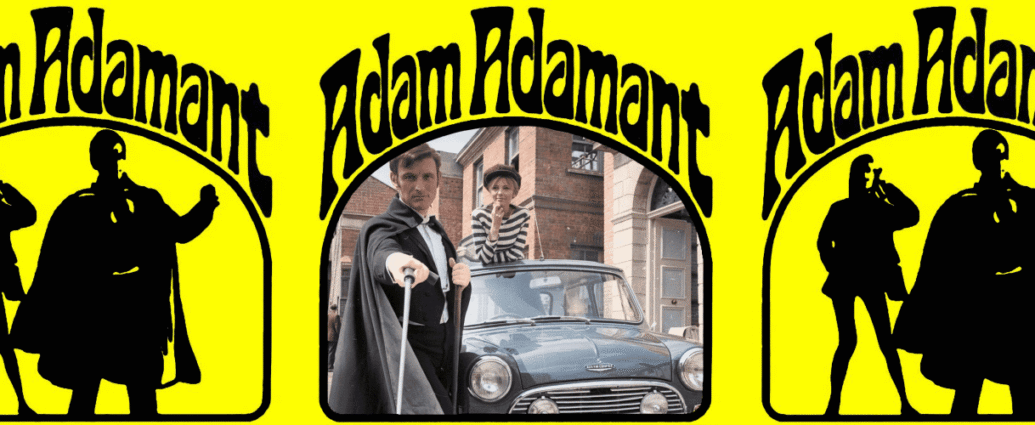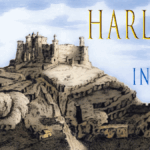Adam Llewellyn De Vere Adamant was discovered in the mid sixties after a long period of hibernation in an ice coffin following a 1902 encounter with his arch nemesis, The Face. But where was that? Oxford Circus? Carnaby Street? The South Bank? London Bridge? Thats what we’ll find out!
Adam Adamant Lives! tells the story of an Edwardian adventurer who awakens in the swinging Sixties after being frozen in a block of ice since 1902 by his nemesis, ‘The Face,’ who would later be reincarnated and cause Adamant even more grief. Sydney Newman, the creator of Doctor Who, and producer Verity Lambert collaborated to create a series to rival The Avengers – somewhat ironically, both of these TV executives had also created The Avengers! Nonetheless, Adam Adamant Lives! had no future after the final episode of the second series due to inconsistent production and script-writing values. Its what one could term wasted efforts as some of TV’s best scriptwriters were drafted in to create the best storytelling and plots possible, ironically Avengers writers too such as Brian Clemens and Robin Banks Stewart were too involved in writing for Adam Adamant.
The central premise of Adam Adamant was he happened to be a time traveller of sorts. That is from 1902 to 1966 in a state of suspended animation. Thus the question is where was Adam Adamant rediscovered? It wasn’t any of those places mentioned above – the actual location as filmed will surprise you as it indeed did me!
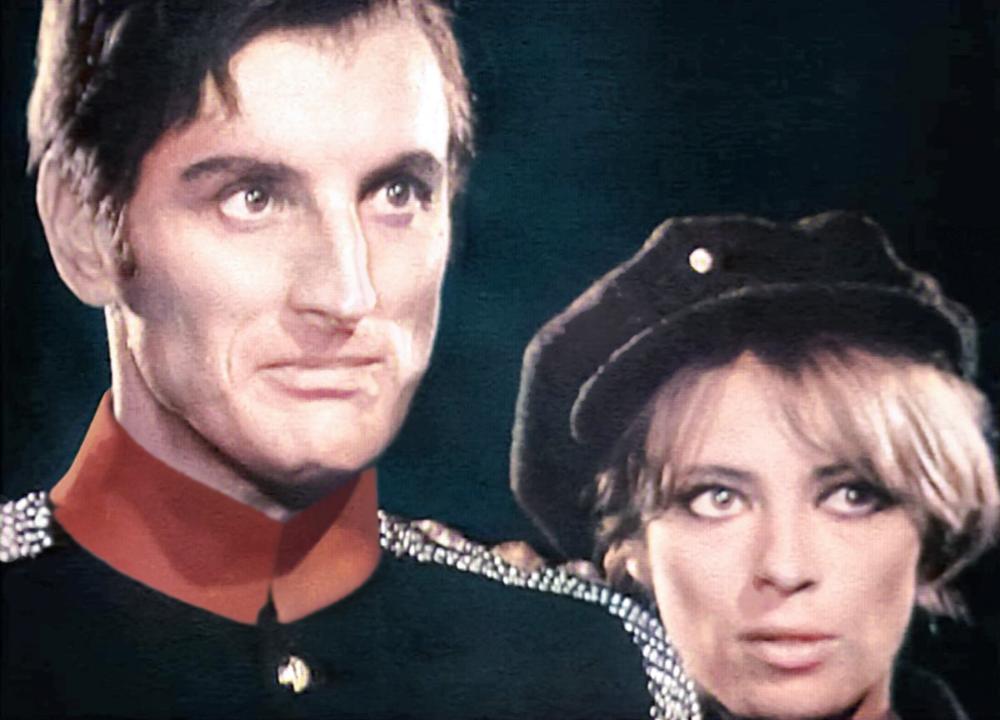
Adam Adamant and his sidekick. Gerald Harper and Julia Harmer (Georgina Jones.)
The first episode, A Vintage Year for Scoundrels, tells the story of Adamant’s discovery in an ice-encased tomb in the mid-1960s. That was originally told in full in the series’ pilot episode, never shown on television. Instead, segments from the pilot episode were used to flesh out the plot in the first official television episode starring Adam Adamant.
The series’ original concept (when Adamant was still known as Sexton Blake) assumed the ‘discovery’ site in question would be at Oxford Circus. There was certainly a lot of construction going on at the time, including the new Victoria Line tube station, new department stores, and what is the London College of Fashion. There would have been plenty of opportunities to set up a short film set at one of the many construction sites, which would also have served as the location where Adamant was discovered. The BBC, on the other hand, chose a location that has absolutely no connection to Adam Adamant.
Carnaby Street in the swinging sixties was quite synonymous with the Georgina Jones image and apparently the first street Adamant was seen in after his escape from hospital – but it wasn’t where he was first discovered! That was this mystery place somewhere in London, which as the following investigations show, was located in West London.
The entire ‘discovery’ sequence lasts approximately fifty seconds. The first twenty-five seconds are a series of shots in rapid succession involving various locations, followed by another twenty-five seconds focusing on the ice coffin and, finally, Adamant himself, frozen in time. There is no mention of Oxford Circus in the series, but some Cult TV sites claim that’s where it was originally intended. Those very sequences can be seen here in this Youtube video. It should be noted that Adam Adamant was shot on a very low budget in comparison to other similar programmes of the time, so television crews were on the lookout for quick and easy fixes, including possibly archival film in the BBC that would double as the type of footage desired for this part of the episode.
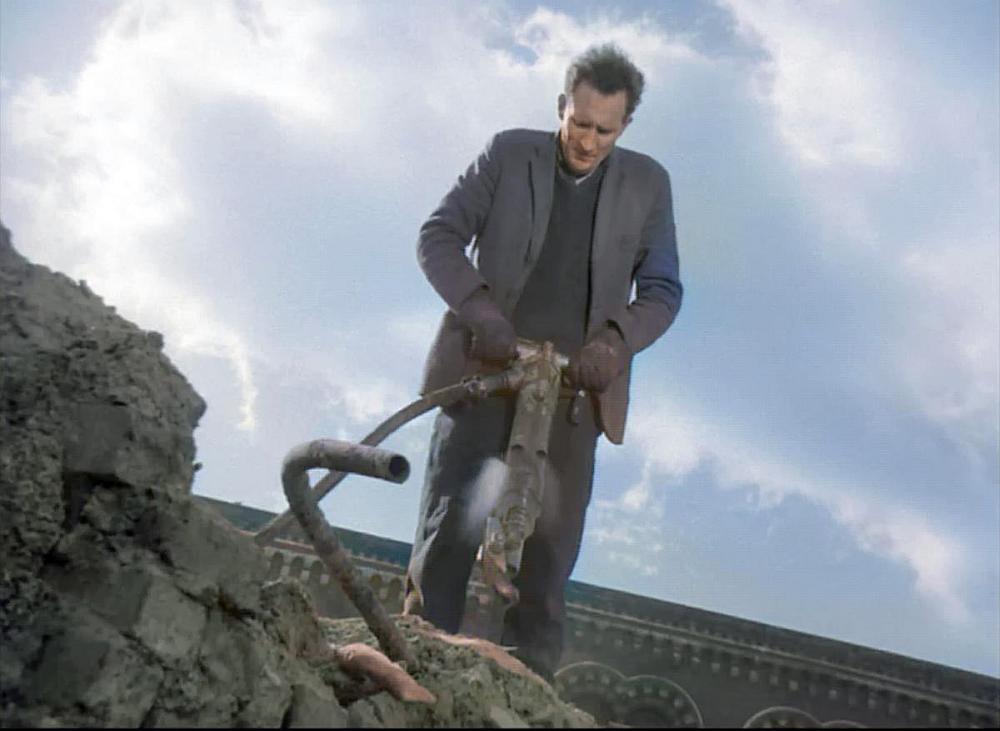
The sequence starts with close up shots of pneumatic drills and then this full length shot of a man drilling away before very quickly switching to a completely different location.
So, where was that location revealed near the end of those sequences? Well, it was a Victorian warehouse that was being demolished, but the exact location’s unknown! It’s clear it wasn’t even shot at Oxford Circus. The exact location remains ambiguous, and to achieve that, various scenes were thrown at the TV viewer – perhaps to disorient them? The BBC appear to have used stock footage for the next scene which shows construction work at York Road near Waterloo station. But hold on! The scene depicted is not the construction of the Shell Centre complex in the 1960s. That had been completed by the time Adamant was created! What else were they constructing in 1966 if not the Shell Centre? Nothing because it was all finished in 1962! It turns out that this scene is actually a film clip from 1949 showing the construction of the Festival of Britain 1951!
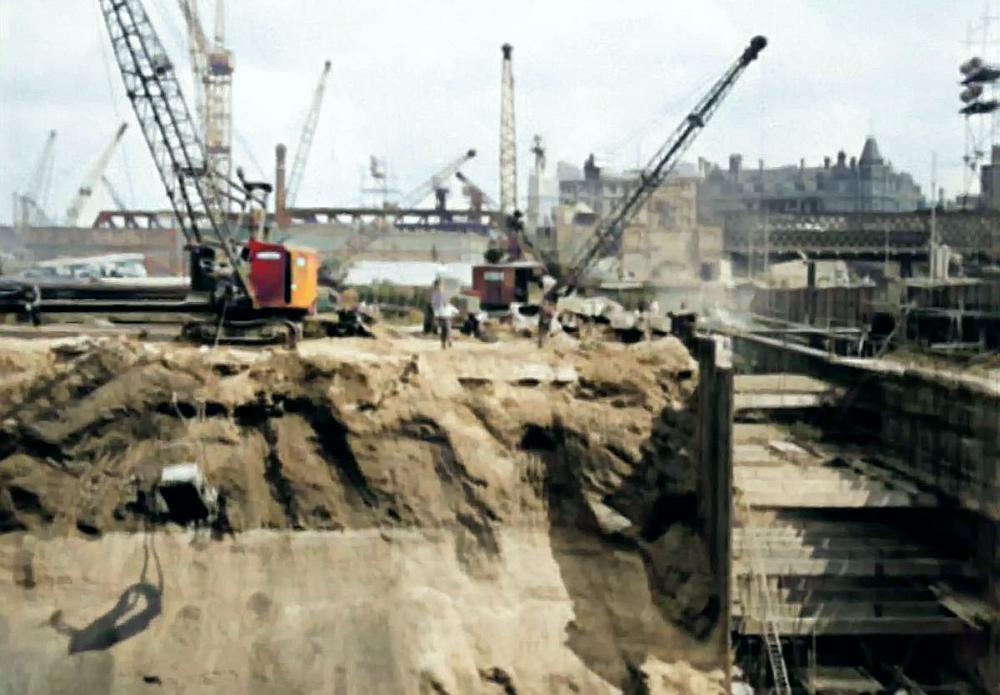
The work to construct the Festival of Britain 1951. There’s a couple of clues that show this is before the Festival site was built. In brief those are a wall alongside the railway which was demolished before 1951, and a chimney in the distance (which was sited between London’s two famous Shot Towers – both of those just out of sight in this view.) This chimney was sited at what appears to be Pitfield Wharf, and it no doubt had vanished by the sixties if not before. The chimney can be seen in a view looking from the Shot Tower.
There is one problem with using this scene: it was made more than fifteen years before Adam Adamant, so not a sixties scene but rather a post-war scene. To be honest, I don’t think most viewers would have been bothered by this because they were being rushed through a series of clips that made no actual reference to Adam Adamant’s possible locations. Perhaps someone at the BBC saw the clip and thought, ‘aha, that’ll do, that’s what they’ve done recently there’ (eg to build the Shell Centre.) Clearly, no one was sent to verify the authenticity of the film clip as being from the 1960s. It appeared to be adequate. However, the location clearly showed some of the construction work for the 1951 Festival of Britain. As shown below, that section of the sprawling exhibition site would have been known as The Fairway/The Crossway. The camera used to capture the above scene would have been positioned near the centre of the colourful building depicted below, facing east (eg to the left.)

The Fairway site (also known as The Crossway by decree of the wide thoroughfare) Festival of Britain 1951. Source: Londontopia.
Anyway its clear the Festival of Britain 1951 site isn’t the place we are looking for! Moving on quickly from the Festival’s construction site, we now see a different building and then a flat capped man with a detonator… and there’s an almighty explosion on screen.
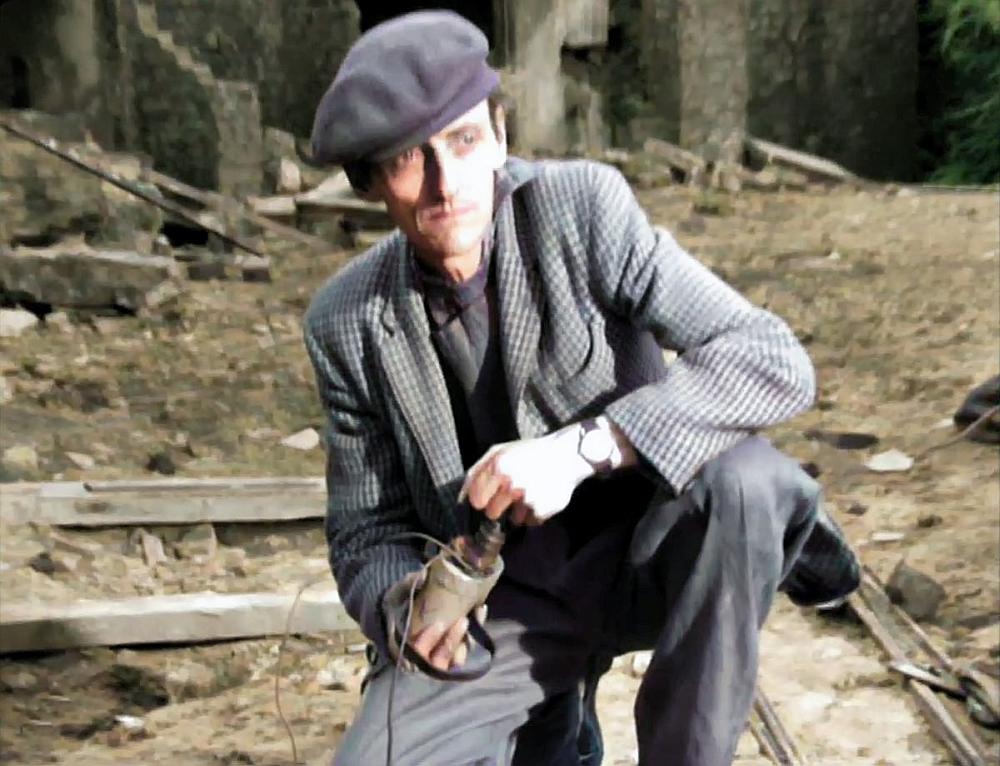
Worker with detonator prepares to blow up a building – and that is when a momentous discovery is made.
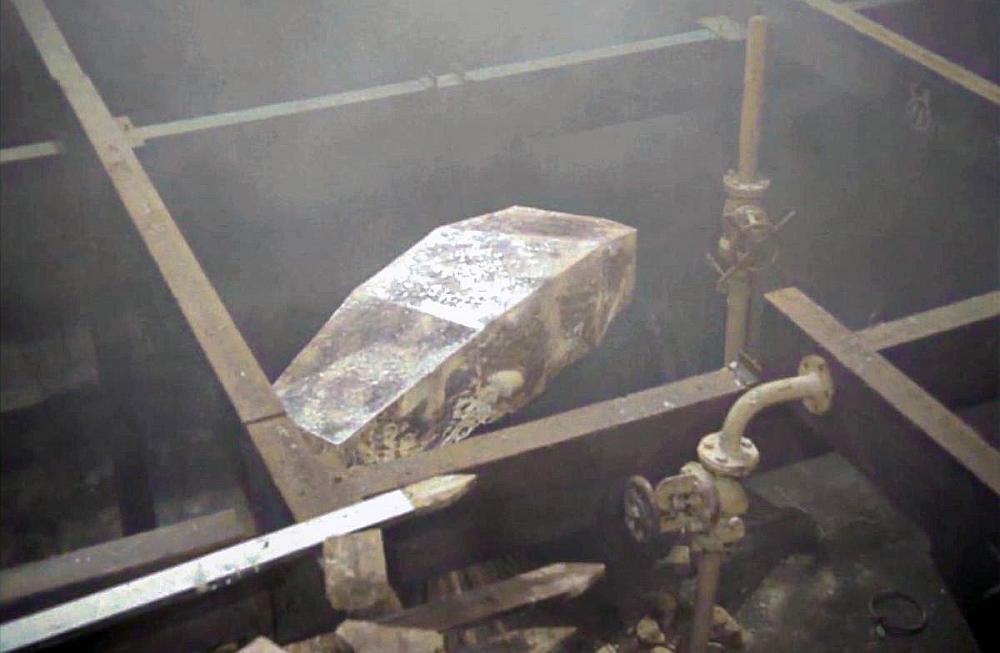
The ice coffin (or tomb) Adamant is discovered in. This is clearly a studio set. But that’s not what we want in terms of any location, actual or implied.
The next segment depicts a housing estate, which is essentially where the ice tomb was discovered. And it’s clear by this point that the location isn’t in central London. It could happen at any time! However, it is clear that this is not the same site as those shown previously! It’s a different location, so the BBC is once again taking viewers on a somewhat ambiguous tour of London.
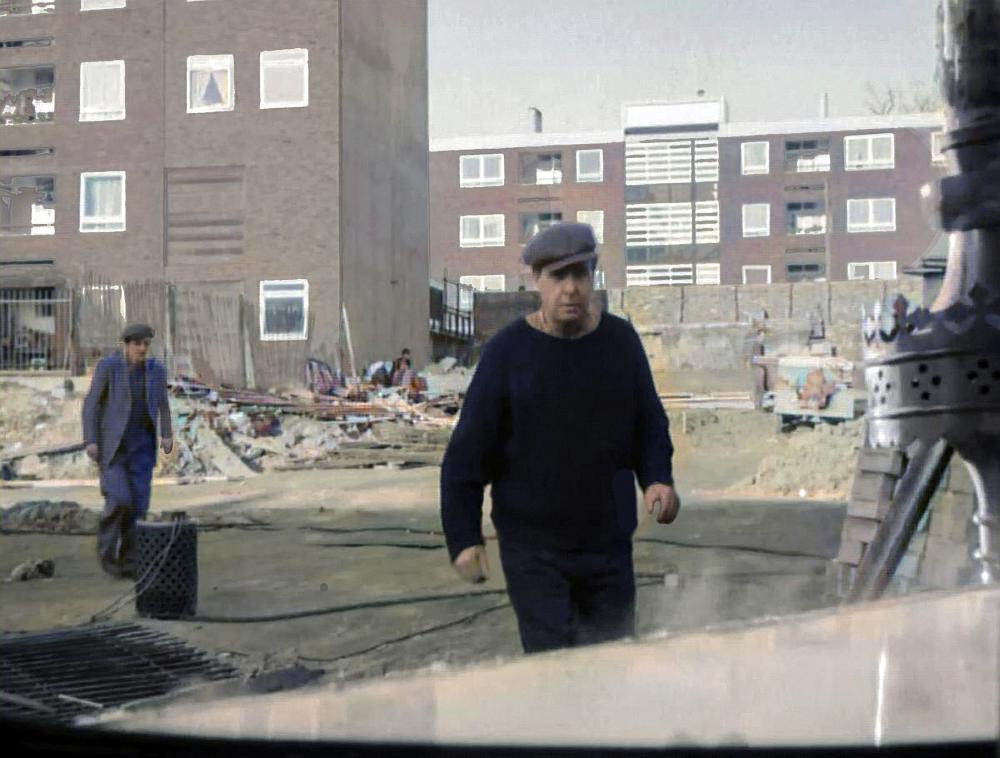
After the controlled explosion workers at a newly built housing estate in West London find the ice coffin.
The ice coffin itself isn’t shown in those scenes with the workers, but there are hints of it (the top of it can be seen – it’s probably a bit of very shiny metal (maybe a mirror) placed across the scene to give the impression that something valuable has just been discovered). The workers shifted stuff quickly (in reality, just a few planks of wood) to uncover Adamant’s ice tomb. For all we know, two of the actual construction workers on the job were quickly pressed into acting roles because all they had to do was look, exclaim, and move a couple of planks.
The next scenes shows the ice tomb itself. These segments were no doubt filmed in the studio, in fact it had to be in order to be able to portray Harper as Adamant encased within the tomb, and the lighting would have been crucial – it would have been difficult to have done this on location especially if the camera crew had popped in for maybe half an hour or something of the sort.
So, where did these housing estate sequences take place? That was in West London near Little Venice. It was actually Bourne Street where the discovery was filmed. This bit is the only part of the Brindley Estate that is on the level, according to the scenes shown in Adam Adamant. The remainder of the estate is built on sloping land.
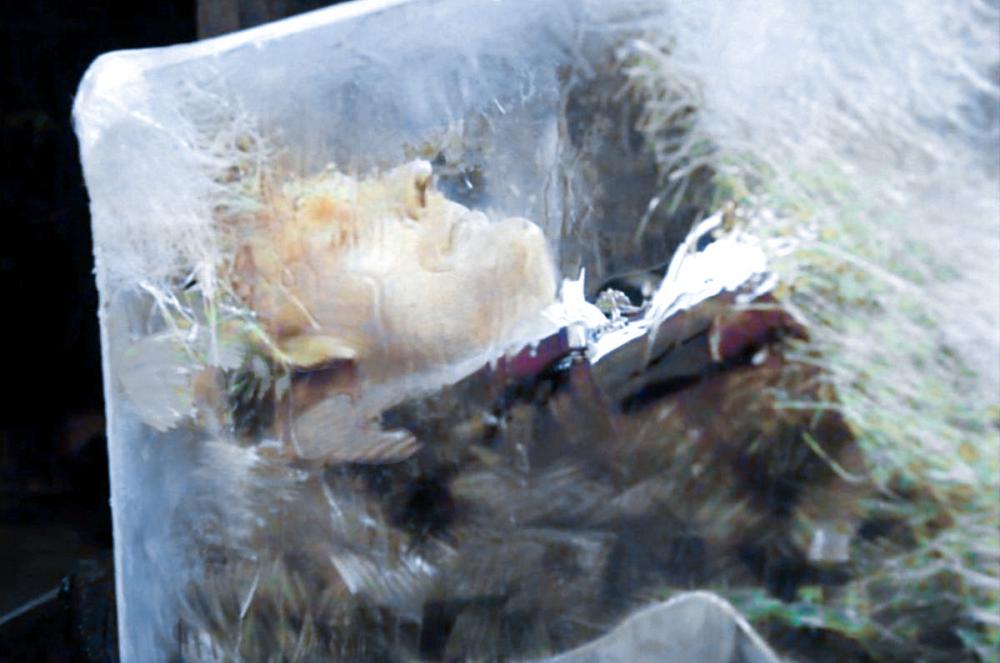
Bourne Terrace, London, W2 – the location the short scenes involving the discovery of Adamant’s ice coffin were filmed. In TV folklore this was the first sighting since 1902 of Victorian swashbuckler, Adam Adamant – frozen in time for sixty four years.
It however took some time to figure out exactly where the filming had took place was. The land was once part of Chichester Terrace and slightly lower than Bourne Terrace itself. The large shadows seen stretching across the image as the workers approach the ice coffin indicate that the large Victorian houses on Chichester Terrace and Kinnaird Street were still standing at the time of filming in 1966.
A stumbling block in determining whether or not this was the correct location was the fact that the estate was completed in 1962. Research shows the estate was extended in 1967, so that would explain the work seen in the episode. In fact a photograph at the London Picture Archive helped confirm the location as Bourne Terrace and being where Adam Adamant was filmed. A lamp post visible in the television scene can also be seen in that London Picture Archive image – and with this information it was possible to work out where the filming had took place despite the two different phases of construction for the southern block of flats.
The bricks of one half of the southernmost Brindley Estate block are quite different to the rest – the mortar especially had been applied differently too. Further investigation was discovered in the form of an Ordnance Survey map which shows the estate half completed. A diagram based on that OS map shows how the southern half of the Brindley Estate looked in the year 1966 and its clear this is the exact location where those brief Adam Adamant sequences were filmed.
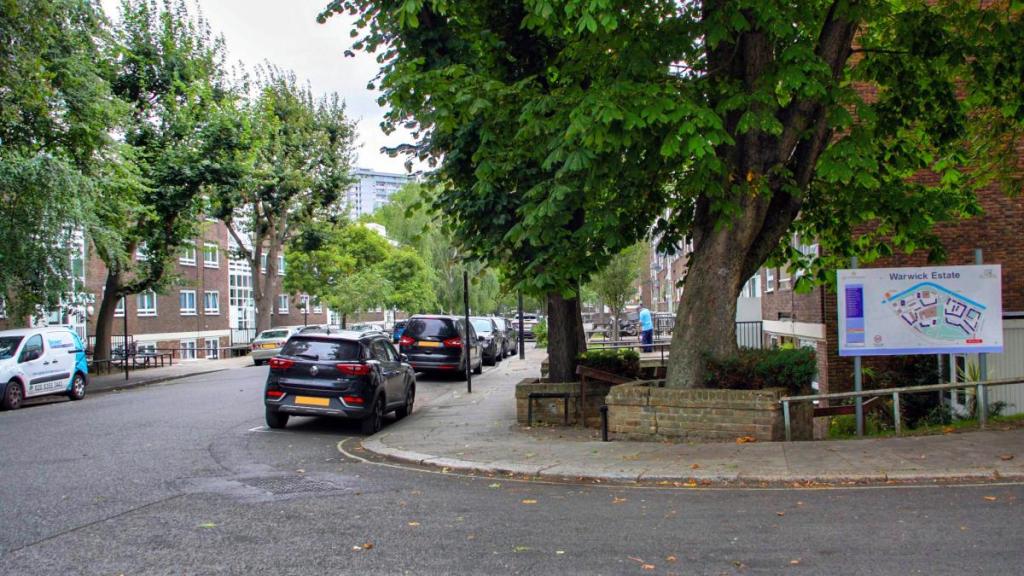
Bourne Terrace (based on an Ordnance Survey map) showing the extent of the flats as built at the time. The red dot depicts the actual filming location. The green shaded area approximately depicts the parkland that’s built on the site.
The actual Ordnance Survey map from 1967 can be seen online at Old-Maps – and that clearly shows the half built block along the south west side of Bourne Terrace. (Note: one needs to click on the 1967-1972 plan to see the estate as it was around the time Adm Adamant was filmed.)
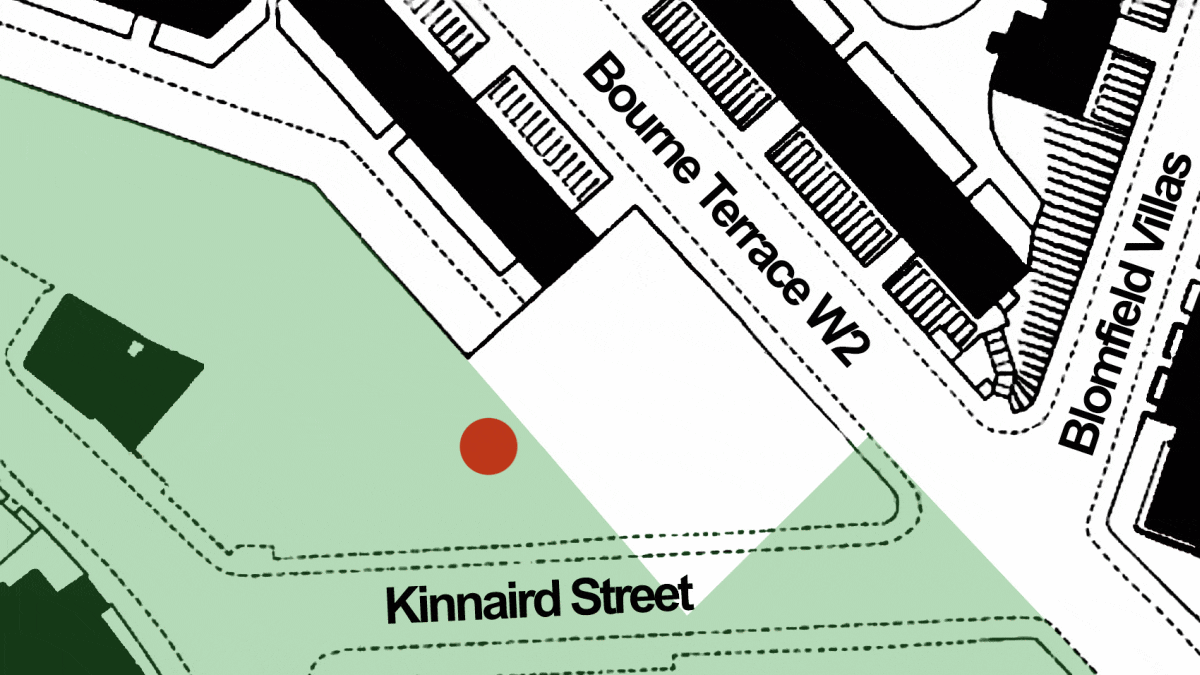
The proof is in the pudding! The south west facing side of the 1960s block on Bourne Terrace showing the sections built at earlier and later dates. The original pre 1966 section can be seen in the 1967 Adam Adamant scene which is shown again below.
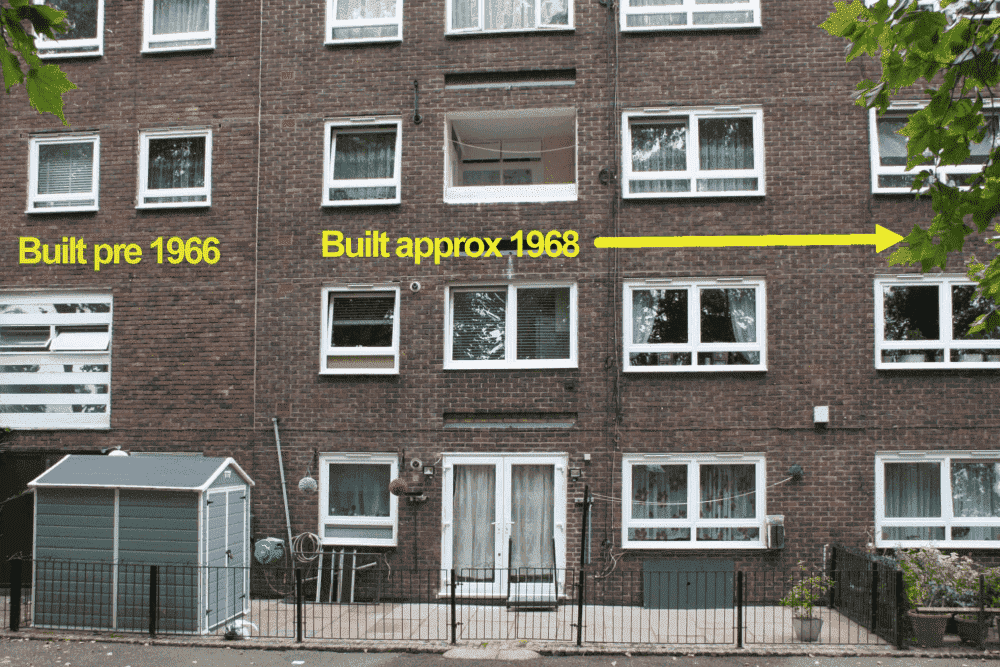
The same windows in this scene can be seen in the modern photograph above. Behind the man on the left can be seen part of the low wall which can be seen in the modern view and this is also where the wooden shed is sited. The flats seen opposite in Bourne Terrance can be viewed on Google Streets.
There’s one ironic twist. Though we can say with certainty that this segment of the series was shot while the Brindley estate was being built, the actual filming site is no longer part of the estate but is deep below Westbourne Green Open Space. That’s a small patch of parkland sandwiched between the Brindley estate and Harrow Road/The Westway, and a result of work done to complete a total rebuild of this part of London. Westbourne Green Open Space was finished around 1974.
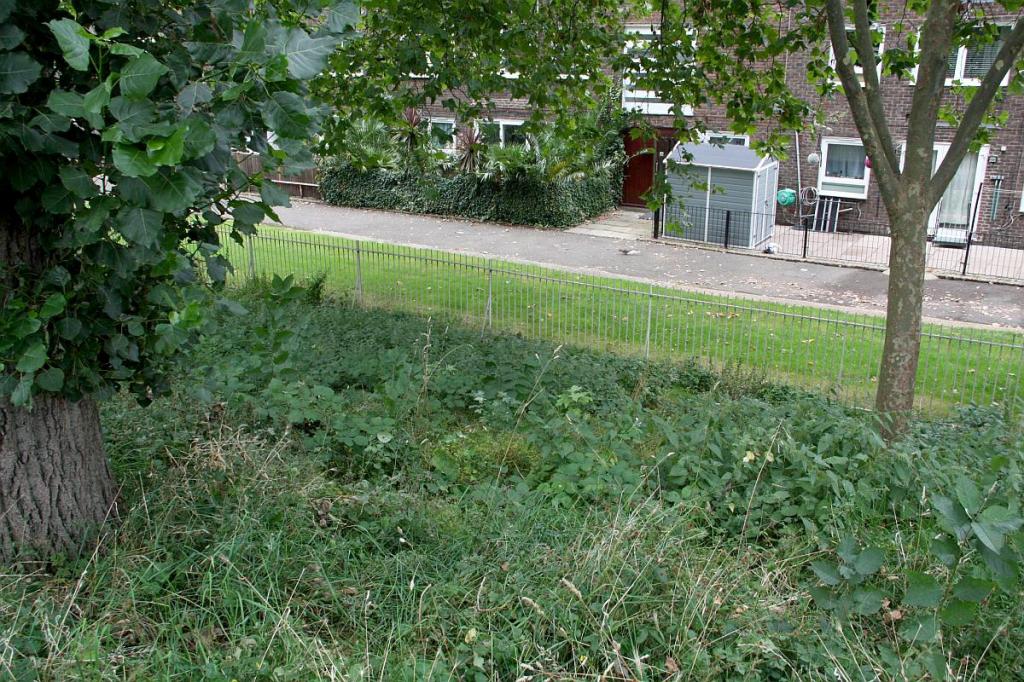
The actual location where those brief Adam Adamant sequences were filmed. Its now part of Westbourne Green Open Space which backs onto the Brindley Estate.
This is the first time anyone has written about this particular part of Adam Adamant Lives! When the series was shown in the sixties I’m sure some would have recognised the location – even those who lived on the Brindley Estate itself.
The actual site in question can no longer be seen since its perhaps fifteen feet or so beneath Westbourne Green Open Space. After the Brindley Estate was completed in the late sixties, the adjacent parkland was created by way of infilling in order to raise the land and form a visual barrier between the estate and the Westway.
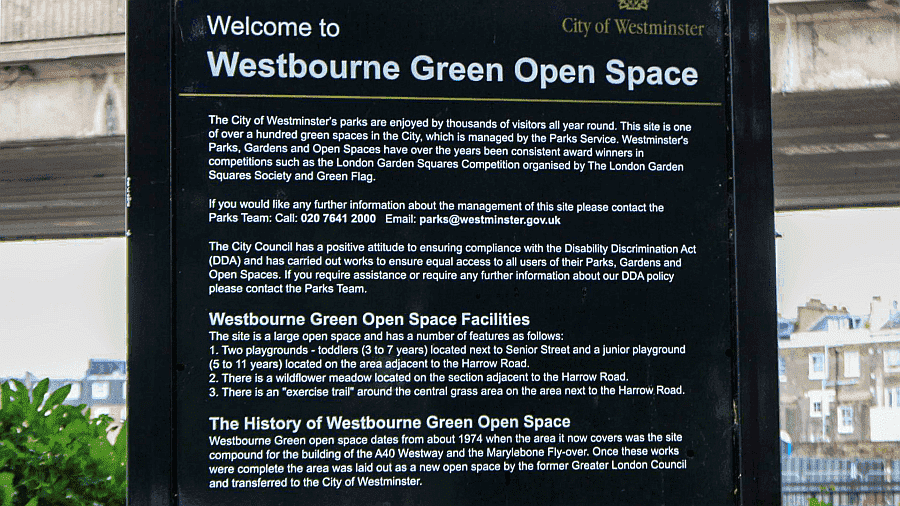
City of Westminster information board at Westbourne Green, giving the date the parkland was created.
Note: All the images from Adam Adamant were screencapped from my DVD collection and colourised specially for this post.
